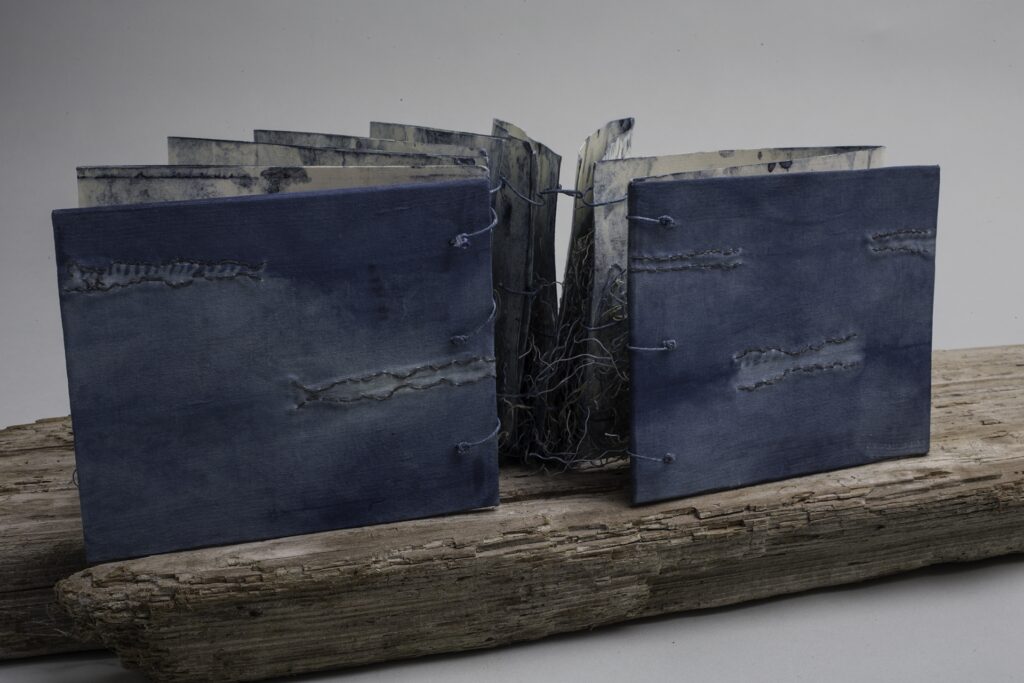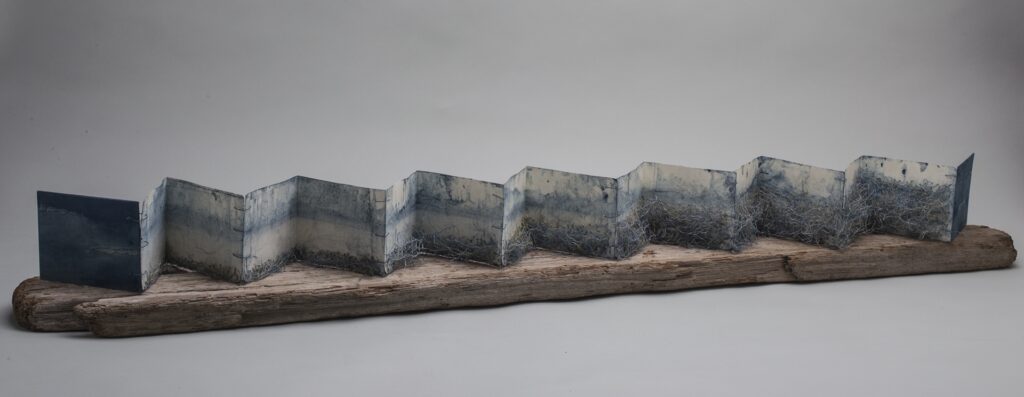Featured Writer: Renée Owen
First-person reflections on the art of writing haibun

One of the most exciting things for me about writing in the haibun form is the “click”—that moment in my writing, possibly early on or maybe not until the final rewrite, when I sense the prose, the haiku, and the title fit together seamlessly, with the sum of the whole unmistakably more potent than the parts. This compelling resonance signals my piece is working.
Whether you’re writing your first haibun or you’ve written and published hundreds, how to arrive at that elusive juncture can feel like a mystery. Steps forward on the path might include some of the following:
- Read lots of haibun, haiku, creative prose writing, and other forms of poetry. Study what makes them work. If you feel inspired by a subject, a scent, a place, or a style, try a freewrite in that moment, letting the inspiration keep your pen moving.
- Join a poetry critique group or class. Work with the suggestions you receive. Be willing to cut every word and phrase that is not needed, including the first sentence (or the last). See how your piece holds up on re-readings.
- Don’t get stuck on only one style of haibun. Deepen your work by trying a variety of forms. Consider borrowing (or stealing) an admired style from a favorite writer. Whether writing on your own or with a group, try using writing exercises as a starting point.
- Cultivate patience (and more patience). View publication rejections as an opportunity to notice where your poem may need more work. Though a few rare poems pop out whole and fully baked, most benefit from marinating between drafts.
- Have a love affair with words. Tell a story—any story, your story.
One of the many forms of poetry I enjoy exploring is ekphrastic writing. A museum or a gallery visit, even postcards of art or photography, can provide inspiration. Be open to the idea that music, dance, theatre, books, or movies can also spark the artistic impulse for your next freewrite. Letting genres cross-pollinate creates myriad possibilities and invites synesthesia-like experiences to heighten your perceptions and color your literary expression.
As a mixed-media fiber sculptor and book artist, I’ve found inspiration for my creative practices in two ways that stand out— using my haibun as a jumping off point for my visual artmaking, and also using my art, and the original experiences that inspired it, as material for my poetry. It’s a rich and curious interweaving that I’m grateful for. Here are two of my own haibun, previously published. Follow their scent trail of flotsam and jetsam to discover how they spawned a visual art piece titled The Tide Takes Her, shown following the two haibun.
I. Under the Sea
Flesh clings to her bones. In the last few days, only our Cuban caregiver can tempt her to eat. I call early, midday on their coast. Giselt reports, “Your mama ate three bites of a tomato sandwich.” I ask to speak to my mother. She rasps hello, but the effort saps her. In her ocean kingdom, liquid fills her one remaining lung, the levels rising, day by day, hour by hour.
new year moon over sea-washed sand fog for her shroud
II. Mother Ship
The sky, a turbulent mix of black & white. A stone gathering on the horizon. Gulls cry, dashed about on the wind. He wades deep out in the surf. Holding the box overhead, stopping at that juncture where ocean spills into lagoon. Stretching strong arms high, his hands safe from the sea’s reach. When he can go no farther, he turns towards me. I pause, reluctant to give the signal. With my nod, he flips the box upside down into the current. Our scattered scarlet leaves show her trail. She’ll continue to ebb & flow in our lives, buoying us along. Sometimes sinking us in her shadow.
beached seal her eye sockets sing of the deep

Renée Owen, The Tide Takes Her, 2017, private collection
The invitation from cho to write this essay planted the seeds for a new haibun, also titled “The Tide Takes Her,” after the visual art that inspired it. Shown below, the poem merges aspects of ekphrastic poetry with an artist’s statement about the book-art sculpture, weaving them together with previously published haiku from my latest book, This One Life. Post a comment to let me know if you think this “experiment” worked (or not). Happy writing!
III. The Tide Takes Her
first light titrating the edge of longing
A sculptural rendering of the changing tide—an artist’s book, four feet long with fifteen hundred reef knots in varying shades of waxed linen thread—homage to my mother’s life, the tidal currents of her struggles to breathe and her painful passing…
beach glass each smooth edge closer to you
… paper, swatches of a stained vintage silk kimono, indigo, wax, linen and cotton thread, ink, paste, fragments of poetry and driftwood, woven into an oceanic artifact layered with the gravitational pull of memory and meaning…
the ache within my ache counting moonbows
… intimate and tactile, the meditative gestures of mark-making—knotting, dyeing, shibori, embroidery, calligraphy and accordion binding—a ritual transforming grief into a shifting seascape, a tale of healing…
breaking waves moonlight tips the dark night

Renée Owen, The Tide Takes Her, 2017, private collection (5 x 45 inches)
Credits
“Under the Sea,” awarded 2nd Place in the Central Valley Haiku Club’s Kilbride Memorial Haibun Contest; it appeared (in slightly different form) in cho 12.2 (2016), and was anthologized in Your Voice Is Needed: Marin Poetry Center Anthology. “The Mother Ship” appeared (in slightly different form) in Modern Haiku 46.3 (2015) and was anthologized in Water: Marin Poetry Center Anthology (2016). The haibun “The Tide Takes Her,” inspired by writing this essay, is previously unpublished. The haiku in this haibun first appeared (in slightly different form) in Modern Haiku, Mariposa, and Acorn. The artist’s book The Tide Takes Her (2017), exhibited locally, was photographed by the multi-talented Garry Gay. It was purchased by a private collector in love with the sea.
About the Author
Renée Owen’s newest book of haiku, This One Life, received a publication award in the Backbone Press Haiku Contest and was shortlisted for a Touchstone Distinguished Book Award,. A collection of haiku and haibun, Alone On A Wild Coast , received a Snapshot Press Book Award and a Touchstone Award. Her haibun, widely published internationally, have won awards from the Haiku Society of America and Modern Haiku (for Best of Issue), among others. Renée enjoys performing her poetry live to the accompaniment of her musician husband. Her mixed-media fiber sculpture and artist books are exhibited in juried and invitational shows, published in print and online, and held in private and public collections. She lives and creates in Northern California, a short distance from the coast. See more of her art at www.reneeowenartandpoetry.com.

Awesome Rene !
Very inspiring to know of your
amazing artistic talent !!
Sincerely
Jean
Delighted to hear, Jean, your generous words (and to know you’re out there in world doing your own creative healing with others)!
Beautiful haibun and haiku. You have a way of using just the right words to capture those transcending moments. Thank you for sharing your talent.
Thanks Diane! Our CHO community (readers and writers alike), continuously inspires. Appreciate your close reading, and touched by how you get it! Renee